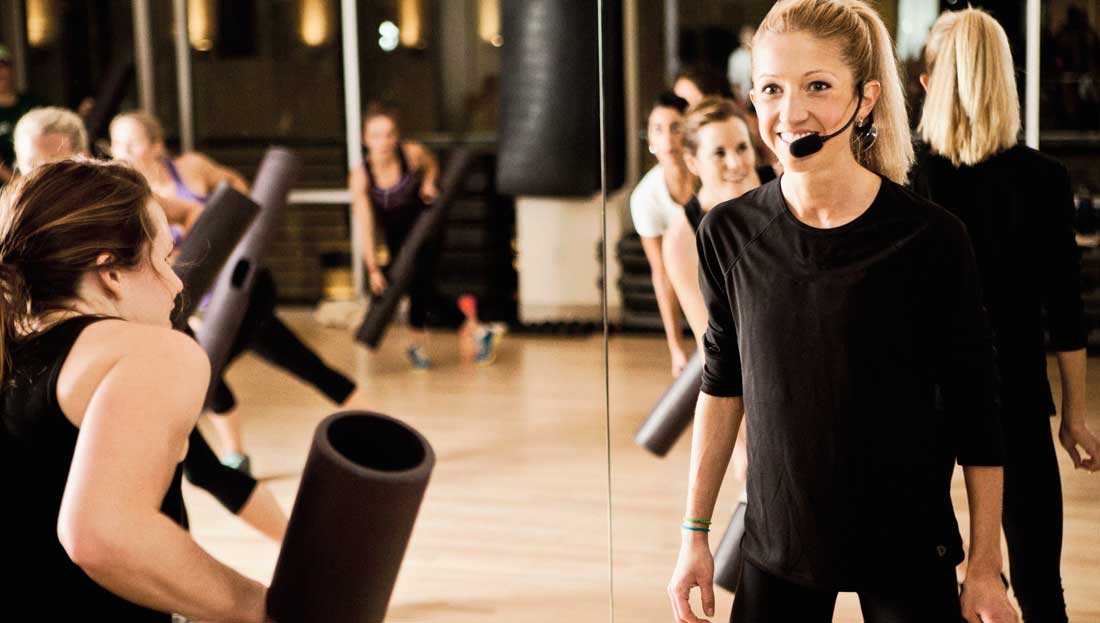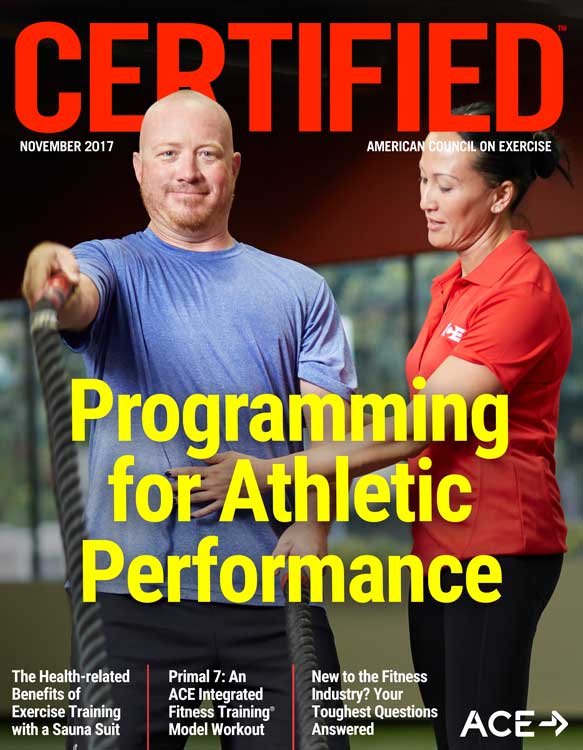
Most fitness instructors either love subbing or hate it. Regardless, subbing is a necessary part of any group exercise program. Of course, the last thing anyone wants is for a sub to feel as if he or she is being “thrown to the wolves” in an unfamiliar, unreceptive environment. The smoother the subbing process, the better the outcome for everyone—sub, regular instructor and participants. Here’s how to make it work.
A Suitable Sub for Your Class
Good subbing starts with the regular instructor. You’ll want to ensure that the person who subs for you is well suited for the class in both format and teaching skills. While this isn’t always possible in an urgent, last-minute instructor swap, let’s assume you’ve got ample time between when you need a sub and when you first start asking around.
Even though it might be easiest and most time-efficient to go with the first person who says “yes” to covering your class, you’ll want to avoid having a sub feel vulnerable or unsuccessful because they lack the necessary skills or style to lead your group. Participants won’t appreciate this either. Sometimes recruiting the best match requires additional time and legwork.
Connect with instructors on the schedule who teach the same class type. Even if they know the format, however, their abilities or style might be different from yours. In that case, it doesn’t hurt to invite potential subs to take your class ahead of time. “I would have them come to my class one to three times so they can get an idea of exactly what the participants are used to,” says Ami McMullen, a TRX Master Trainer, conference presenter and blogger at fitwithflash.com.
Behind the scenes, you can also supply subs with background info to best meet your participants’ needs. “The regular instructor should be prepared to give the sub as many specifics as possible about the group,” says McMullen. For example, you should share your participants' music tastes, age range, intensity preferences and common chronic injuries.
Fitness educator Jessica Maurer hands over what she calls a “cheat sheet.” “It’s a list of notes I keep on my phone with details about the class participants: who is injured, who is picky, who is your go-to helper, etc. I want my sub to be prepared for my class, so I assist in that preparation as much as possible.” Based in Asheville, N.C., Maurer teaches for BOSU, Hedstrom, Lebert Fitness and Savvier Fitness.
If an instructor is not all that familiar with the format you teach, you might also share a basic workout template. “An instructor can have a ‘go-to’ workout written up and saved on their computer,” says McMullen. “Because most subs are arranged through email, when somebody confirms to take your spot, you can simply respond with an attachment of something participants have done before (and liked) and instructions on how to implement it.”
After all that, consider that the best time to plan for a sub is when you don’t yet need one. In addition to being an IDEA Fitness Instructor of the Year award finalist, Doris Thews is the International Program Director for Indo-Row and ShockWave, and Senior Master Trainer and Global Mentor for Schwinn. She recommends laying the groundwork in advance to secure someone—a “sub buddy”—who becomes your reliable and expected stand-in. Perhaps you could be that person’s go-to sub as well.
“I travel all the time,” says Thews, a resident of Laguna Beach, Calif. “I have a consistent sub so it’s not so shocking for the members. They know that if Doris is not here, then X instructor will teach the class instead.” This arrangement creates a consistent experience for everyone.
The Big “Sell”: Getting Participants Warmed Up to a Sub
Even if you arrange for the perfect instructor to cover your class, you might still have to sell the idea to participants. It’s no secret that some discerning members can be chilly or downright unkind to subs. This is unacceptable behavior, of course, but it does happen. Fortunately, there are ways to minimize potential unpleasantness.
First, request participants’ input as part of your sub-selection process. When they feel included, they might be less likely to complain. “The instructor should be asking his or her regulars whom they really like to have subbing,” says Tricia Murphy Madden, ACE continuing education provider, co-creator of Barre Above and an instructor at Denali Fitness and Cycle Bar in Seattle, Wash. “Then create a give-and-take relationship with the instructors who are your ‘go-to’ subs.” 
Second, be up-front about upcoming changes. “Regular instructors can prep their classes ahead of time to let them know there’s going to be a sub,” says McMullen. “Let the members know who the person is, maybe some of their accomplishments/certifications to establish a sense of trust, and also let them know that you’ve taken the time to prep the sub on what the members’ needs are.” This establishes an atmosphere of customer service that participants are likely to appreciate.
In addition to telling participants about a great sub, it helps to show them. “Have the sub come to class the week before to meet and sweat with the members,” says Thews, who teaches multiple formats, including indoor cycling, rowing, yoga and BOSU. “This shows members that you have handpicked this instructor and it's not a random or last-minute sub.” The more familiar participants become with a sub, the more accepting, and gracious, they might be about future instructor changes.
Finally, put a positive spin on the whole sub scenario. Maurer promotes subbing as an exciting event, not just something participants must put up with. “I consider subbing (whether being one or requesting one) as more of a ‘special guest star’ instead of a substitute teacher,” she says. Reframe the experience for members by pumping up the sub’s “guest appearance” as a special occasion versus a blip in regular programming.
“The more you talk up the other [instructors], the more members will see your subs as a true gift on the days you are away,” adds Madden.
When You’re the Sub: A Seamless Transition
Subbing is a two-way street in group fitness: Sometimes you are the sub. From that perspective, there are measures you can take to ensure your own success when the tables are turned.
As mentioned above, try to attend, or at least pop into, the class you will cover. After a particularly awkward experience early in her 12-year teaching career, McMullen began making it part of her job to study the class she’d be stepping into as a sub.
“I learned the hard way that members really like what they’re used to,” she says. “As the sub, I thought I would just teach what I’d done in a past class in a different gym for a completely different age group and ability level. I started the class with around 40 people and watched in horror as a few would walk out the door every few minutes. I ended class with just three people, who I think just stayed because they felt bad for me. After this extremely awful experience, I made it a point to prepare as much as possible for the next class I subbed.”
To do so, McMullen would visit the class a week or two before she was scheduled to sub. “I would sit in the corner taking the most specific notes possible—combos, choreography, music, member names and descriptions, etc.— and then when it came time to teach, I taught about 70% of the class the exact same as the regular instructor. I’d merge in some of my own combos and language and basically just try to show people a good time. Success! The more times I subbed for the same group, the more I would add in my own stuff, but I learned to transition slowly, so as not to shock people with a completely different class experience.”
You don’t have to teach exactly like the regular instructor, but do be sensitive to the fact that you’re stepping into his or her domain. Infuse your own style while ultimately providing what participants prefer. “You never want to pretend that you subbing isn’t going to feel different to the class,” says Madden. “But you can give them a glimpse into why this will be worth their while.”
If you suspect people won’t show up or you’re hesitant about the reception you might get, consider bringing in your own support system. “Stack the class on the down low,” says Thews. Why not invite a few friends and/or your own regular participants? “Fill the room and create energy,” says Thews. “Existing members will think, “Who is this sub?’ They might be more likely to want to stay in class due to the full room and energy.”
Finally, seek feedback with the hope that you’ll be welcomed back. “After class, it’s more important than ever when you are subbing to ask for feedback and offer your time to converse after class,” says Madden.
Subbing: A Favor or Opportunity?
On a final note, let’s consider flipping the subbing mindset. Agreeing to sub is commonly viewed as doing someone a favor. But what about treating an invitation to sub as an empowering career opportunity?
“I’ve always viewed subbing as a way to expose myself to as many members as possible in order to gain potential permanent classes down the road,” says McMullen. Maurer points out that becoming a skilled instructor isn’t just about how long you’ve been teaching, but how often you do it. “The more hours you can teach, the more experience you gain, and the better you become at perfecting your craft,” says Maurer.
That’s one reason why Thews loves to sub. “I have to bring my A-game,” she says. “Subbing sharpens my skills. Members don’t know me and they don’t know my cues or my style, so I need to be crystal clear and win them over. If you want to be a better instructor, sub for someone who is better than you!”
Madden suggests we can further elevate the perception of subbing from a club management standpoint. For example, clubs could reward frequent subs with perks, recognition or even a special wage. “Clubs should absolutely pay a higher hourly fee to instructors when they are subbing versus teaching a regular class, even if it’s simply $5 per hour,” she says. “The long-term impact is profound for assuring the quality of classes is very strong.”
No matter who’s teaching, participants expect quality. They want to enjoy the workout and feel as if their time in class is well spent. When regular instructors and subs work together to deliver an exceptional class experience, everyone wins.
Successful Subbing Checklist
Here are a few reminders about strategies you can use—as a regular or sub instructor—to pave the way for a smooth subbing experience.
Regular Instructor
- Ask for input from participants about which subs they especially enjoy.
- Search for subs that have similar skill sets to yours or teach the same format.
- Provide necessary details to subs about the class plan and participants’ needs/preferences.
- “Talk up” how great your sub is and make it known that you personally selected this person to take care of your group.
- Invite the sub to attend or observe your class.
- Arrange to have a go-to sub for a consistent experience.
Sub Instructor
- Attend or observe the class you will be subbing.
- Inquire about participant details and a basic class plan, if necessary.
- Keep customer service top of mind.
- For moral support, invite a few friends or your own regular participants to join you in a class you’re subbing.
- Consider yourself a “guest instructor” versus a second-class stand-in.
- View subbing as a valuable opportunity to sharpen skills and gain experience.





 by
by 






